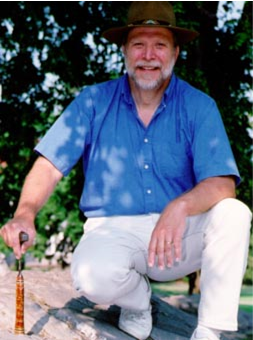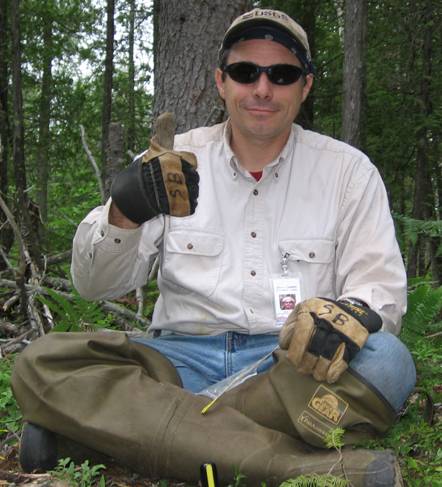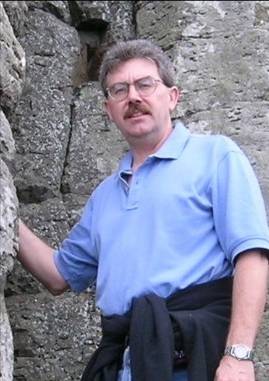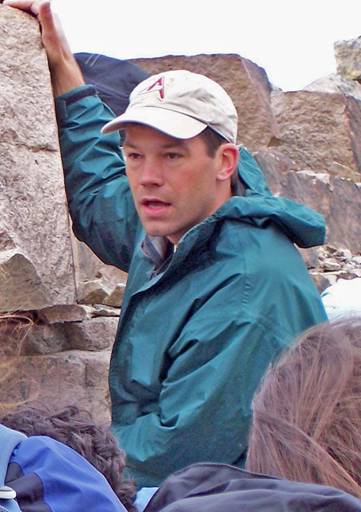James Madison University - Department of Geology & Environmental Science
Teaching Chaos and Complex Evolutionary Systems Theories at the Introductory Level
Model: Self-Organized Criticality:
The Sand Pile Model
Self-Organizing EvolutionStrategies and Rubrics for Teaching Chaos and Complex Systems Theories as Elaborating, Self-Organizing, and Fractionating Evolutionary Systems,
Fichter, Lynn S., Pyle, E.J., and Whitmeyer, S.J., 2010, Journal of Geoscience Education (in press)Description: Per Bak (1999) developed self organization as an evolutionary system by modelling sand pile behavior. Being a physicist, though, instead of starting with real sand piles, he built a computer model of sand pile behavior . Later workers then tested his ideas by studying real sand pile behavior (Bak explores these in his book, but it turns out quartz sand piles do not follow the model, but other kinds of sand grains do; but that does not take away from the broader implications of SOC).
This is one of the most important models we introduce, and it is done in every class where we talk about these ideas. The concepts are useful in numerous direct and indirect circumstances. The best way to get into this is to read Bak’s (1999) book, but also look at Jensen, (1998; accessible with basic math development) and Hergarten (2002; very high level mathematics). Bak has worked to apply SOC to a diversity of natural systems, both biological and physical. His SOC model of earthquake activity along fault zones is the most widespread example in the geosciences, but SOC has numerous other applications.
Presentation: We project a picture from Bak’s book of a hand dribbling sand to build a sand pile (illustration below), while telling this story, using our hands to conjure up images,
“Now, imagine a platform, perfectly flat, and a container above it containing sand, with a valve that allows us to dribble sand one grain at a time if we wish. Etc.”
Done this way the demonstration is rivetting to a class as we talk through building the sand pile from single grains, to a low mound, to an ever steepening pile that evolves to more and more critical, adjusting itself through avalanches that reduce the criticality, while additional sand builds the criticality back up again, leading to another avalanche. The term avalanche—a sudden release of energy—refers naturally to sand pile behavior, but we use “avalanche” to refer to any abrupt shift in state or sudden release of energy in any self-organizing critical system. ).
Anticipated Learning Outcome:
- 17. All natural open systems dissipating sufficient energy evolve—self-organize—to critical, sensitive dependent states which lead to avalanches of change that follow a power law distribution.
Turcotte in his book Fractals and chaos in geology and geophysics defined SOC this way: "The definition of self-organized criticality is that a natural system in a marginally stable state, when perturbed from this state, will evolve back to the state of marginal stability."
Power Point - Self-Organized Criticality
The Sand Pile Model
- from Bak's Book Self Organized Criticality
 Lynn S. Fichter
Lynn S. Fichter
 Steve Baedke
Steve Baedke
 Eric Pyle
Eric Pyle
 Steve Whitmeyer
Steve Whitmeyer